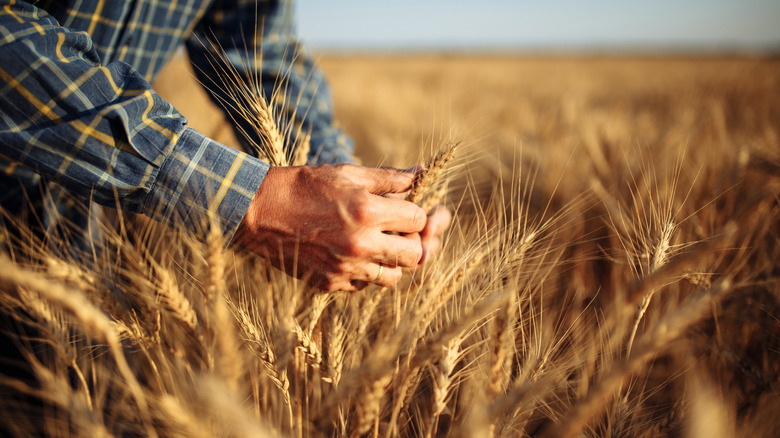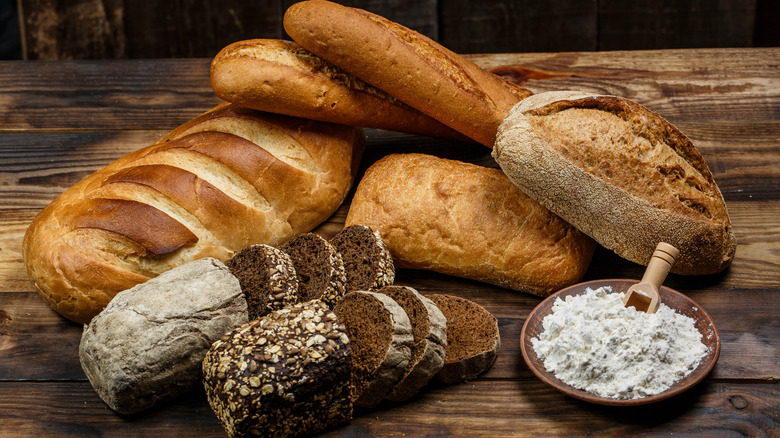The Difference Between Red And White Wheat
Even if you are an experienced home baker, red and white wheat might not be terms you are familiar with. You probably know some of the different types of flour and you might even understand what separates pastry flour from bread flour, but the type of wheat they come from is not something you see on a label. We recognize there are some outliers that are pretty different in flavor, like rye or durum wheat, but for "normal" flours we just assume wheat is wheat. The process by which it becomes the myriad number of flours we see on the shelf, and the different types of wheat that are used for each variety remain a bit of a mystery.
Knowing the properties of your flour is important because it can make a pretty big difference in how your baked goods turn out. According to Country Living, subbing in something like bread flour for cake flour is going to make your cake dryer and have a less tender texture, because of the different protein levels in each. But if your French bread isn't turning out quite as crusty and airy as you would like, it may be because you aren't using flour with enough gluten. So what sets red wheat apart from white wheat, and how will it affect your baking?
Red and white wheat differ in taste and gluten development
Red and white wheat diverge in both taste and level of protein. According to Serious Eats, the names red and white come from the bran, which is the outer shell of the wheat grain. Red wheat has more tannins, which alters the color and gives it a slightly bitter, wheatier flavor than white. Bob's Red Mill also notes that red wheat has a higher protein content than white, which matters because protein is what affects wheat's ability to develop gluten. High protein content is generally better for bread, while flour used for cakes and pastries is better off with lower levels of protein.
How will the differences between red and white wheat affect how you shop? Not much as most flours sold in the U.S., like all-purpose or bread flour, are made from red wheat. In fact the production of red wheat in America far outstrips white, with the Agricultural Marketing Resource Center reporting that we produce almost 1.4 billion bushels of red compared to only 200 million bushels of white. There are more varieties of whole wheat flours on the market because they are typically made with red wheat. However, the bags you see labeled "white whole wheat," are specifically made with white, not red. In most cases, farmers have made the choice for you, but when given the option, you should choose the wheat that works best for your recipe.

